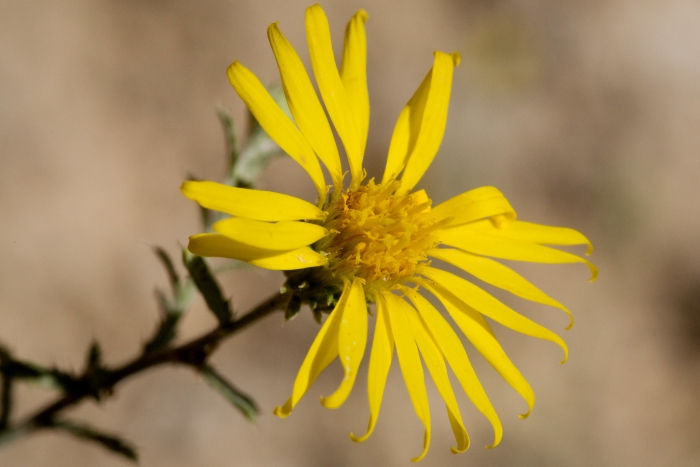Cutleaf Ironplant
(Xanthisma spinulosum)
Cutleaf Ironplant (Xanthisma spinulosum)
/
/

Patrick Alexander
CC0




















































Estimated Native Range
Summary
Cutleaf Ironplant is valued for its drought tolerance and its ability to thrive in poor soils, making it an excellent choice for xeriscaping and naturalistic plantings in arid regions. It is also used in rock gardens and as a border plant due to its compact size and interesting foliage. In cultivation, it requires full sun exposure and can tolerate a range of soil types, provided they have good drainage. While it is generally low-maintenance, it may be susceptible to root rot if overwatered. The plant is not known for aggressive roots or significant disease problems, making it a reliable choice for gardeners seeking a tough, drought-resistant species.CC BY-SA 4.0
Plant Description
- Plant Type: Shrub
- Height: 0.5-1 feet
- Width: 0.75-1 feet
- Growth Rate: Moderate
- Flower Color: Yellow
- Flowering Season: Summer
- Leaf Retention: Deciduous
Growth Requirements
- Sun: Full Sun
- Water: Low, Medium
- Drainage: Slow, Medium, Fast
Common Uses
Low Maintenance, Rock Garden, Showy Flowers, Street Planting
Natural Habitat
native to the prairies, grasslands, and desert scrub of the Central Southwestern United States and Canada, as well as Northwest Mexico
Other Names
Common Names: Spiny Ironplant, Cut-Leaved Ironplant, Lacy Tansy-Aster, Spiny Goldenaster, Spiny Goldenweed, Cut-Leaf Ironplant, Lacy Tansyaster, Haplopappe Épineux
Scientific Names: , Xanthisma spinulosum, Machaeranthera pinnatifida, Haplopappus spinulosus, Machaeranthera australis, Xanthisma spinulosum var. incisifolium, Sideranthus spinulosus, Machaeranthera pinnatifida var. incisifolia, Xanthisma incisifolium, Machaeranthera incisifolia
GBIF Accepted Name: Xanthisma spinulosum (Pursh) D.R.Morgan & R.L.Hartm.